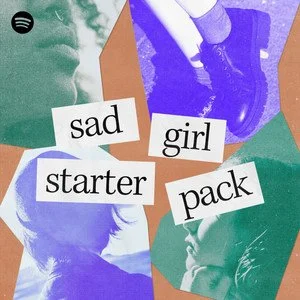Music at the Margins of Sense
Forthcoming Fall 2026 - University of Michigan Press - “Music & Social Justice” series
Music at the Margins of Sense challenges the prevailing misconceptions associated with "deafness" and "hearing" in Western music through engaging with the musical experiences of culturally Deaf, oral deaf, hard-of-hearing, and hearing disabled musicians, imparting a multimodal, multisensory conception of music and musicianship in the process.
By surveying a range of examples drawn from Western music history, contemporary popular music and new media, Hollywood cinema, music psychology, and lay literature on neuroscience research, I reveal that "deafness" is mistakenly understood as a state of total auditory silence and heightened tactile sensation, a stigmatizing trope I call the "figure of deafness." I show that composers, music critics, listeners, and concertgoers alike appeal to the figure of deafness as a way of understanding the extremes of sensory experience, while sidelining the intrinsic diversity of deaf sense-making and subjectivity.
As a counterpoise, the book engages in close study of diverse forms of musicking spanning auditory, visual-spatial, rhythmic, vibrational, and non-sonorous modalities, from the visual music of sound artist and sign language user Christine Sun Kim, to the vibrotactile listening strategies of percussionist Evelyn Glennie, to events held by the deaf-led musical collective Deaf Rave, to the musical endeavors of hearing aid users, to music and musical instruments devised to mitigate against the effects of tinnitus and hyperacusis, among other examples.
Chief among the book’s interventions is its reappraisal of hearing and its role in biologically driven conceptions of innate musicality implicit in the expression “a natural ear for music,” whether through attention to the cultural production of "natural" hearing in the design, manufacturing, branding, programming, and increasing automation of digital hearing aid systems, or through attention to the contingencies of auditory disorders like tinnitus and hyperacusis. The book newly advocates for a diversity of hearing natures, a plurality that defies fixed auditory thresholds and perceptual processes, and idealized notions of sonic fidelity.
Synthesizing across a rich selection of case studies, the book ultimately offers what I term “expert listening” as a musical value system and analytical framework that decenters institutionalized forms of musical expertise and skill through diverse articulations of bodily autonomy, perceptual agency, musical self-determination, and inclusive musical world-building rooted in the lived experience of disability.
Chapter 1: From the Figure of Deafness to Expert Listening
Chapter 2: Deafness qua Silence
Chapter 3: Deafness qua Vibration
Chapter 4: Hearing beyond a “Natural Ear for Music”
Chapter 5: Auditory Self-Regulation
Coda: Expert Listening as Musical World-Building
The Musical Vernacular of Depression
University of Michigan Press - Music & Social Justice series (under contract)
In recent years, depression has become an undeniable focal point in Western popular music in several key ways, including as a term freely invoked by pop artists and fans to disclose, destigmatize, and normalize everyday experiences of depression and anxiety; as an explicit pretext for listening to pop music as a form of “mood regulation” in connection with mood and activity-themed playlists on music streaming platforms and video sharing apps; and as a distinct musical and visual style forming around key musical personae and different gender-coded sugbenres.
My book attends to this complexity as reflective of the prevalence of clinical depression in young people and its associated social inequalities, and the widespread cultural destigmatization of mental health, particularly among Gen Z.
I thus approach the semantic practices, stylistic conventions, and affective cultures associated with depression in pop music as a dynamic aesthetic formation and expressive language that I call, the musical vernacular of depression. I argue that the musical vernacular of depression blurs a clinical definition of depression as a common and serious mood disorder (DSM-5; ICD-11) with a generational sensibility that is unbounded by diagnosis and pathology, bridging work in disability studies, mad studies, affect theory, the psy-disciplines, and critical public health studies in the process.
Through analyzing the gendered and racial dynamics of the musical vernacular of depression across diverse musical contexts – from bedroom pop to “sad girl” indie to ASMR “whisper” singing to the “sad boys” of mainstream hip hop to fan and platform-curated mood-themed playlists – I argue that pop music is transforming the ways young people conceive of, communicate about, and tend to their mental health amid a worldwide disparity of mental health care, for better or worse, while evaluating the cultural implications of this paradigm shift.
Status: First two chapters completed.




